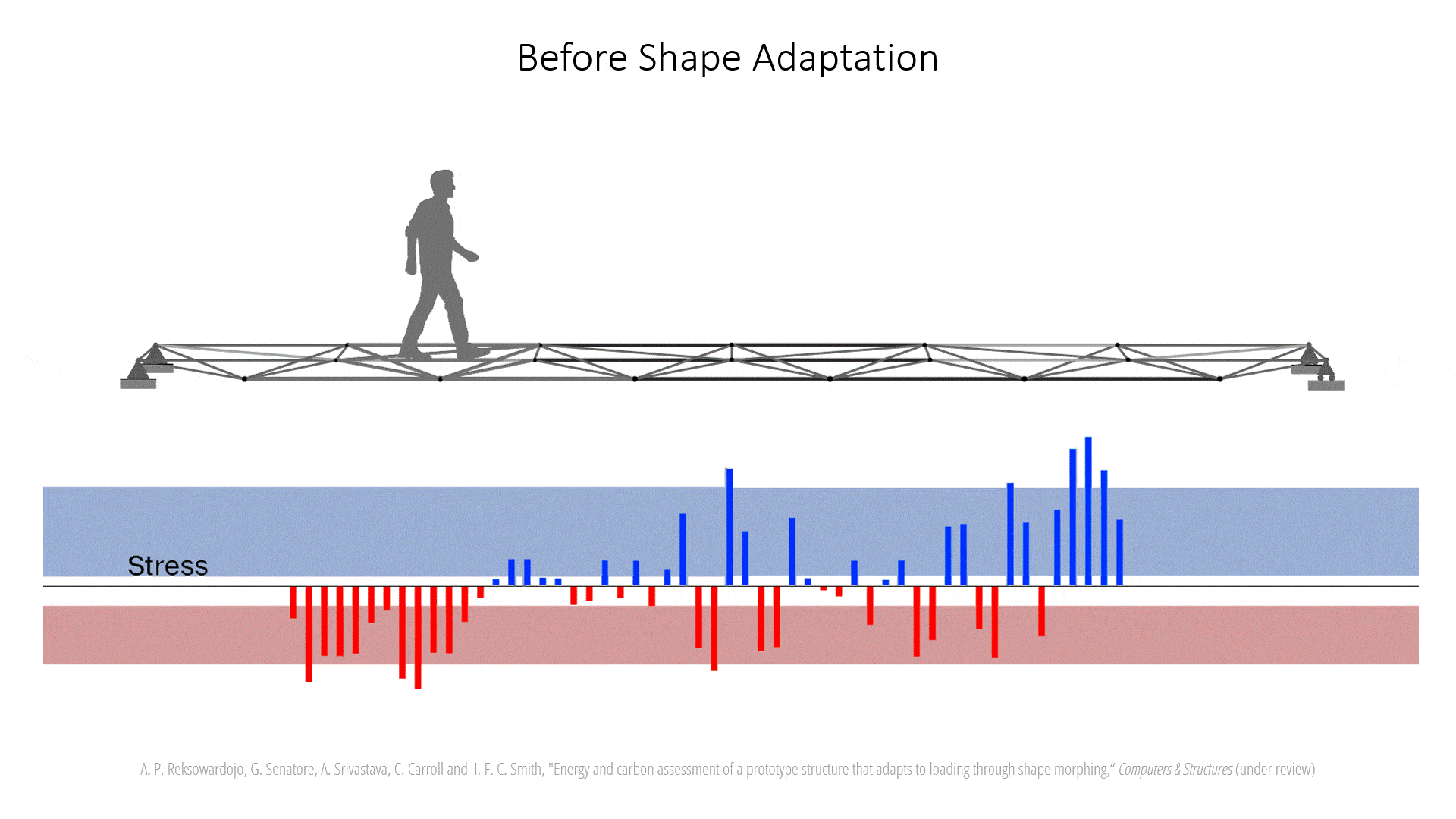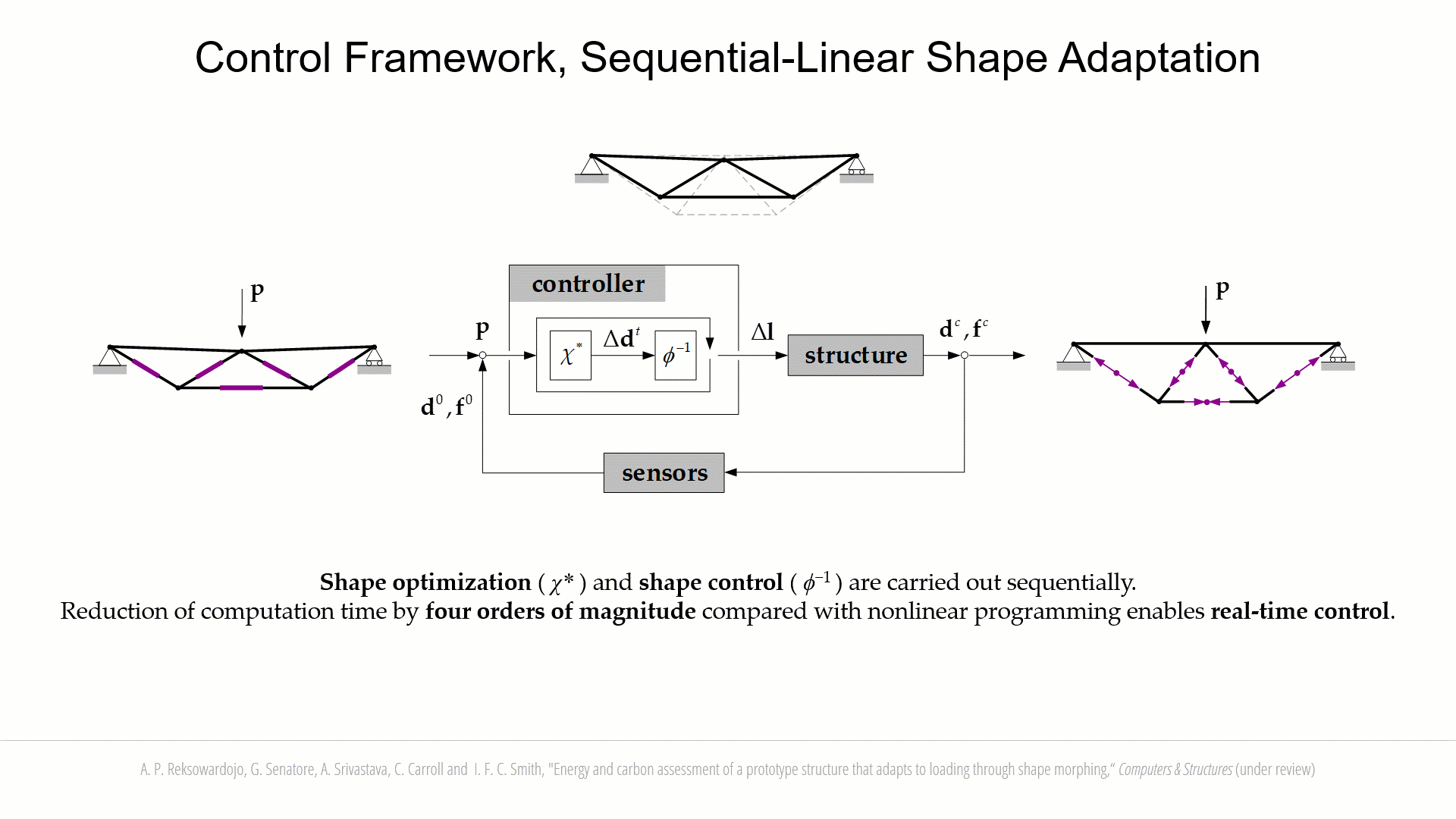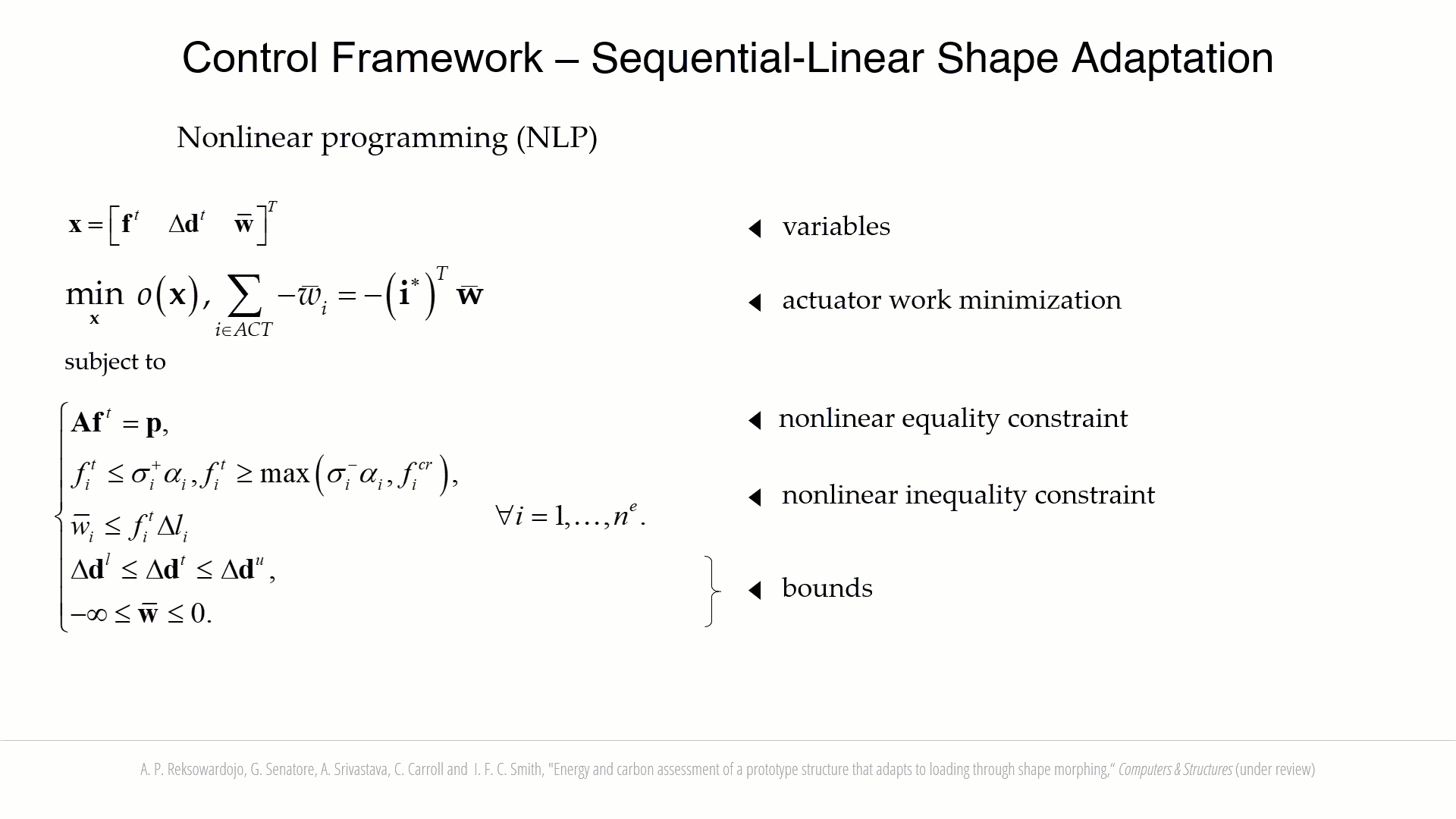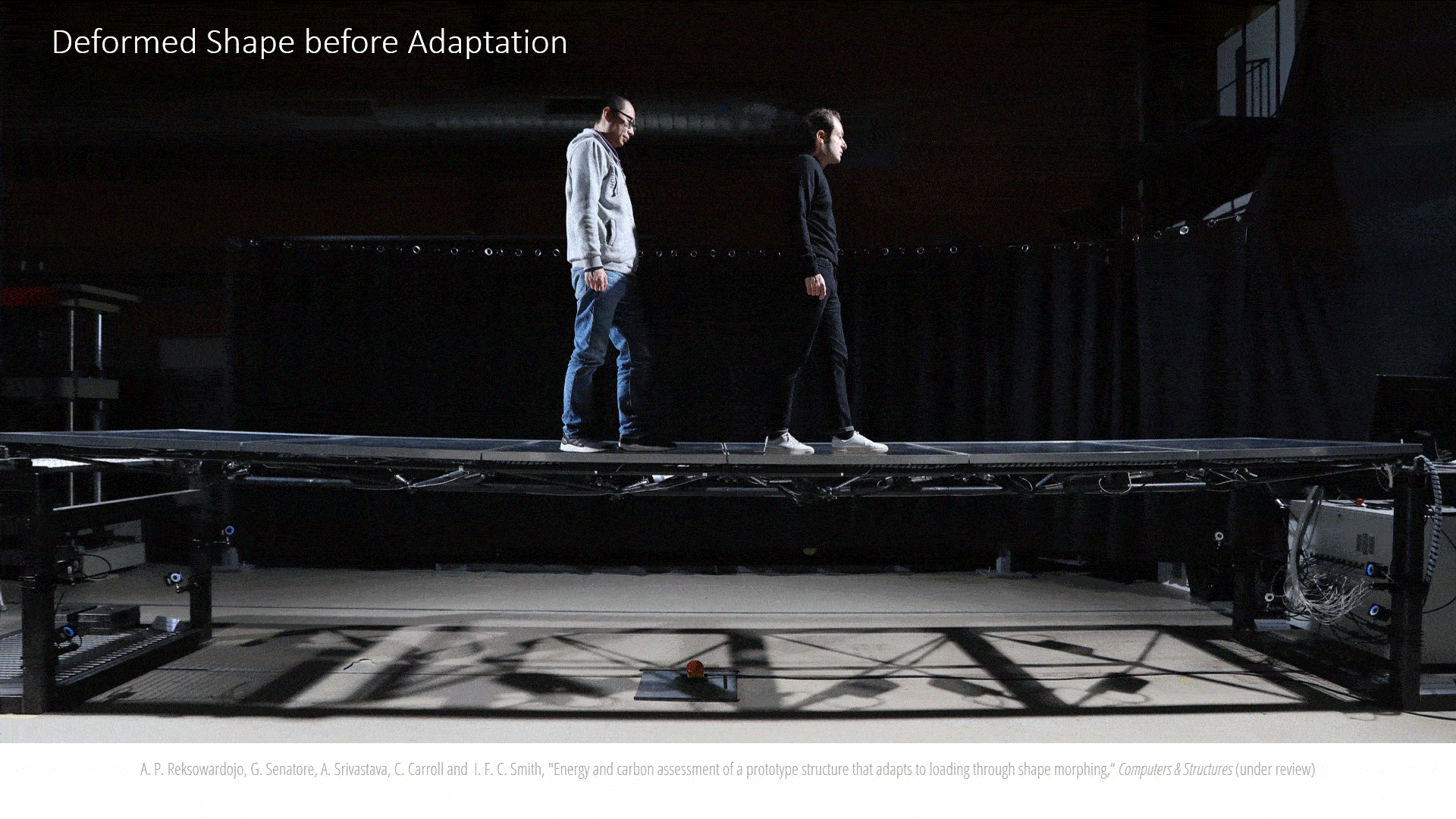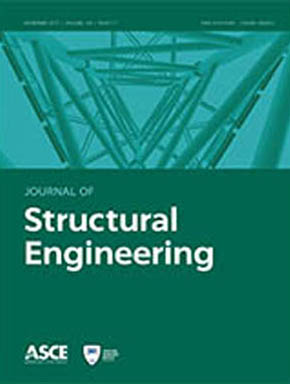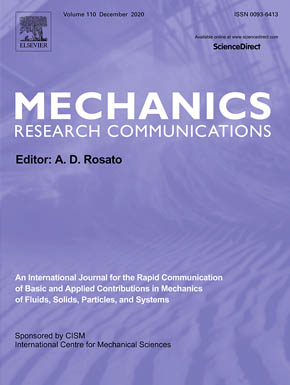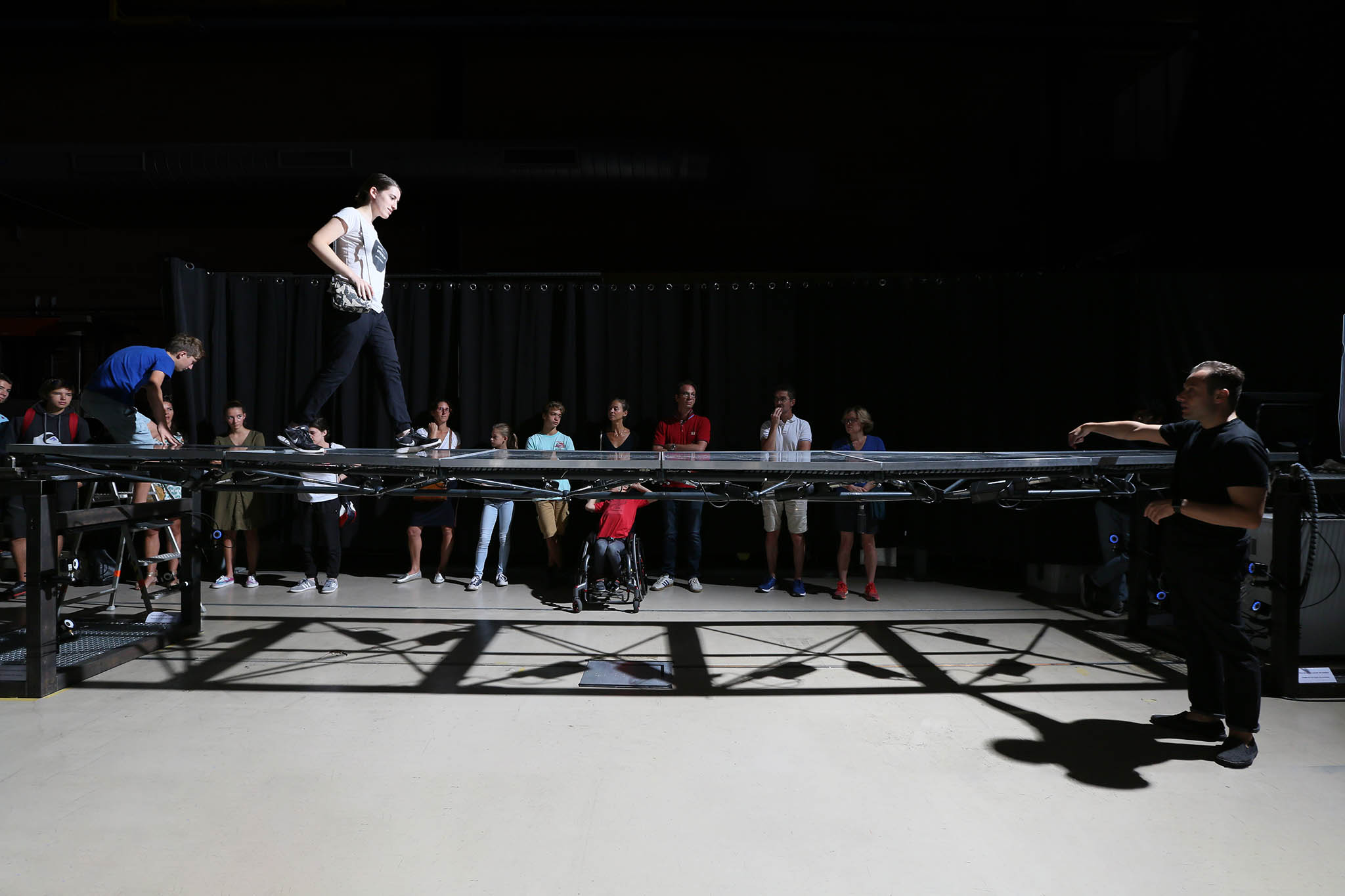Structural Adaptation through Shape Morphing
This research builds upon the work on Minimum Energy Adaptive Structures to further investigate structure-control design strategies to improve structural performance as well as to reduce environmental impacts with respect to conventional passive structures.
The main contribution of this research is in the development and testing of new computational methods to design and control structures that able to adapt to loading through large shape reconfigurations involving geometrically non-linear effects. The design methodology comprises two stages. In stage 1 the structure is designed through sizing and geometry optimization to be able to ‘morph’ into shapes that are optimal to take each load occurrence. The optimal shape changes as the load changes. In stage 2, the actuator placement is optimized so that the structure can be controlled into the target shapes obtained in stage 1. The design criterion employed to coordinate stage 1 and stage 2 is the minimization of whole-life energy (or equivalent carbon) which comprises a share embodied in the material and an operational share for sensing, control, and actuation during service (see Minimum Energy Adaptive Structures). Experimental testing has been carried out on 6.6m (length) x 1m (width) x 0.16m (depth) simply supported truss equipped with 12 linear actuators, strain gauges, and an optical tracking system. This configuration can be thought of as a scaled version of a footbridge or a roof system. The optimal/target geometry is computed in real-time through shape optimization as the load changes. Then, commands are determined to control the structure into the target shape which requires solving an inverse problem in real-time. The mechanics-based control algorithm developed in this work enables accurate shape adaptation using minimum computational cost, which makes it suitable for real-time applications.
Numerical and experimental studies have shown that structures that adapt to loading through shape morphing achieve marginal whole‐life energy savings compared to structures that adapt to loading through small shape changes (see Minimum Energy Adaptive Structures). However, the ability to morph into a shape that is optimal to counteract the effect of loading, enables effective stress homogenization which results in significant embodied energy (material mass or equivalent carbon) savings with respect to weight‐optimized passive structures as well as to structures that adapt through small shape changes. Adaptation to loading through shape morphing enables deferral of energy usage by replacing a large embodied share with a smaller operational share, which reduces life-cycle emissions. This strategy is particularly effective when operational energy for adaptation can be supplied from renewable sources. Since environmental impact costs of energy production will reduce in the future owing to technological advancements, adaptive structures have a great potential to reduce built environment adverse environmental impacts.
Acknowledgments
Gennaro Senatore has led this research during his time at the Swiss Federal Institute of Technology (EPFL) in Lausanne. This work has been generously funded by Swiss National Science Foundation, Arup and Mero Structures.
Team
Research Lead:
Gennaro Senatore (Director)
Collaborators:
Arka Reksowardojo (PhD student), Ian Smith (Director) | Swiss Federal Institute of Technology (EPFL)
Chris Carroll, Henry Unterreiner | Arup UK
Publications
Exhibitions
Related Projects
Minimum Energy Adaptive Structures
All-In-One Structure-control Topology Synthesis
Vibration Control through Variable Stiffness and Damping Structural Components











